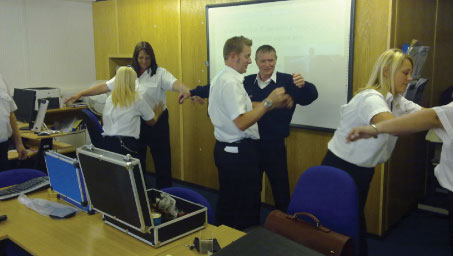
Wesenlund: “Staff will be trained to the same level of competency and have a good basic training that will enable them to build on these skills in a real working environment.”
With airport security regulations constantly evolving, the need for security staff to be fully trained to deal with the versatile nature of ensuring passenger safety is of vital importance.
The perceived increase in the threat of terrorism has led to the introduction of various new security measures, ranging from increased restrictions on the carriage of liquids, aerosols and gels (LAGs) to the introduction of full body scanners at the start of this year.
“Without the threat of terrorism and the increasing threat of a terrorist attack, it might be fair to say security would be a minor issue for most airports,” Wesenlund said. “Unfortunately, it is the world we live in today and security training in the aviation industry is of paramount importance. “We are in a situation where the industry strives to improve security and the terrorist consistently looks for a weak link in the chain. A high level of security training, together with other intelligence gathering, is the best defence we have against this.”
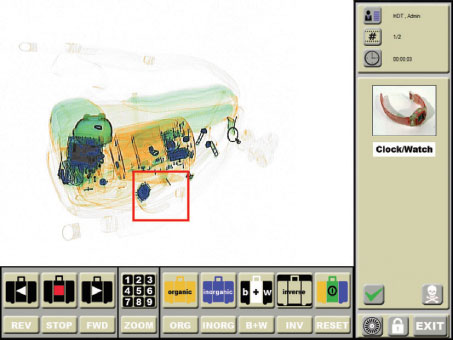
Computer-based training is a vital part of the training process and ensures that security staff are competent in detecting potentially threatening materials.
DME’s dedicated aviation training facilities
Domodedovo Airport’s Aviation Training Centre (ATC) was established in October 2003 to provide training for aviation security agents of Domodedovo Airport. The centre provides initial and advanced onsite and offsite training and last year saw 6,386 officers successfully prepared for airport security operations.
It is the only training centre in Russia equipped with unique training facilities representing a model of the Domodedovo passenger terminal, featuring entrance control; check-in and screening; Border and Customs control; and a sterile area.
Domodedovo ATC features its own ‘air fleet’ – a body of a TU 154 2B with a flight deck, first class compartment, hold and kitchen, which is connected to a fixed glass gallery imitating an extendable boarding bridge. For training purposes, simulants of explosives are hidden in the aircraft and the trainees are expected to detect them.
The training programme includes a theory course given in Domodedovo ATC and then onsite training assisted by experienced security agents and instructors. Onsite training is followed by testing and successful completion means an approval to work as a security agent.
Strict training process
Entrusted with the responsibility of detecting potentially threatening materials, today’s airport security staff must complete a rigorous course of training, which often entails a variety of factors, from general security awareness training (GSAT) to computer based training (CBT) and X-ray machine simulation.
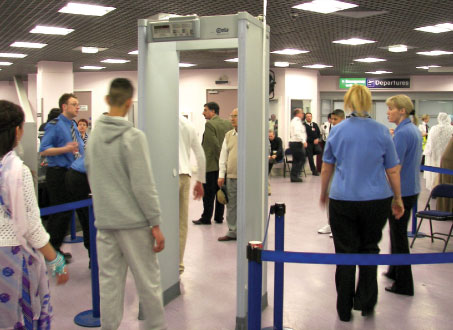
Wesenlund: “The quality of staff training and the ability to measure the competency of the training will be a crucial element in overcoming the issue of security against throughput.”
“We think any high quality training has to be a positive advantage in producing high quality staff,” explained Wesenlund. “Hi-Definition Training believes that training should be measurable and that a good CBT system will provide this impartially and accurately. Staff will also be trained to the same level of competency and have a good basic training that will enable them to build on these skills in a real working environment. GSAT is an excellent example that ensures all staff working in airports will have taken and passed a test to certify that they have an awareness of the surroundings and that they have an understanding of what action to take if they encounter anything out of the ordinary.”
BAA’s Airside Operations Training
In the dynamic and fast-paced world of airside operations, airports rely on highly trained and professional staff to deliver their daily operation. Their role in effectively and efficiently facilitating the first and last pieces of any aircraft’s arrival and departure sequence can make the difference in ensuring your businesses success, which is why BAA recognises the vital importance that training plays in delivering technically competent staff capable of fulfilling this role.
BAA is not only a world-leader in the management of major international airports, but is also a key provider of specialist airside operations training. Its course content is constantly reviewed and updated to provide a wealth of extensive and current airside technical knowledge and operational experience.
It offers unparalleled access to senior aviation professionals who are employed across BAA’s six international airports; contributions from leading industry specialists, including the Civil Aviation Authority; live airside experience at the UK’s only hub airport, London Heathrow; residential short courses; and foundation and advanced operations courses.
Hosted at De Vere’s Hartsfield Manor, the courses are delivered in a relaxed environment, and offer a superb networking opportunity with BAA delegates and other attendees from both UK airports and our colleagues overseas.
Full body scanners
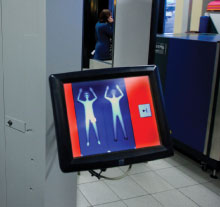
Full body scanners have been integrated into the airport security training process since their widespread introduction in airports earlier this year.
As well as the GSAT, CBT and X-ray machine simulation training, Hi-Definition Training also offers the X-ray Pre-screener, Emulator, ICAO and Ports and Security Awareness courses. Following the introduction of full body scanners to a number of major airports, this is another aspect that has also been integrated into the courses to ensure that staff training is as relevant as possible.
Wesenlund said: “We are committed to building our courses around the new technologies coming through and while aviation is a very strong market for us, there is a need to incorporate ideas from other areas of security that are experiencing similar threats and many of these could also be applied to aviation security.”
Passenger profiling and crowd behaviour, she explained, are other techniques that may be used increasingly alongside other evolving technologies.
The passenger experience
As is the complexity of the industry, airport security is constantly facing an array of threats and obstacles, and the most common passenger complaint is that increased security measures inevitably have a negative impact on the airport experience.
“I suspect the most difficult issue is to manage the security screening as thoroughly as possible and to keep the passenger throughput running smoothly. Moving forward, the new faster generation of screening machines will have the ability to increase and manage the baggage and passenger throughput more effectively,” said Wesenlund. “These technologies combined with the new technologies in passenger profiling and crowd behaviour should improve both passenger security and throughput. The training of security staff is an integral part in any of these processes and, therefore, the quality of staff training and the ability to measure the competency of the training will be a crucial element in overcoming the issue of security against throughput.”
Cranfield University Department of Air Transport
Significant airport developments are already being planned across the world to provide the capacity needed to meet future air traffic projections. However, airports are now having to function in an increasingly constrained planning context driven by environmental limits and by increasingly vociferous political opposition to expansion plans.
Solutions are therefore needed to reduce the environmental impact of their operations and to improve relationships with local communities. Much greater emphasis is being placed on the development of non-aeronautical revenues and this has major implications for the way airport terminals are designed. This is why there is a need for trained managers and planners equipped with the right knowledge and skills to assist in facilitating the further development of the airport industry.
Cranfield University Department of Air Transport offers two solutions for those seeking to develop their careers in the airport industry. Firstly, there is the opportunity to gain a masters degree in airport planning and management either on a full-time (1 year) or part-time basis (3-year) – the only one of its kind in the world. The second option is to attend one-week continuing professional development short courses in specialised subjects, including, from spring 2011, two new three-day courses on mergers and acquisitions and airport economic regulation and competition policy. Numbers are restricted to enhance the learning experience, while presentations are delivered by a combination of university faculty and visiting speakers from the industry.
The security checkpoint of tomorrow
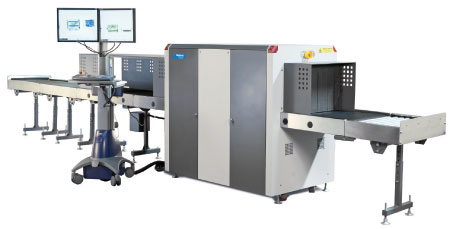
Today, checkpoints consist of collections of standalone boxes, each deployed to address separate threats, which are difficult for passengers to navigate and costly to operate. The latest checkpoints will utilise highly secure technologies that can “talk to each other”, improving throughput and delivering a positive customer experience, explained Andrew Goldsmith, VP global marketing, Rapiscan Systems.
The security checkpoint of tomorrow will enhance operational efficiency – such as faster customer screening and lower staffing requirements – even as it improves checkpoint security. It will also help customers feel both secure and calm as they pass through the checkpoint rather than creating stress and confusion. Sophisticated gating and signage systems will guide people through a checkpoint using advanced people screening and systems that automate the handling and inspection of carry on baggage. Goldsmith explained that in one live airport trial, the use of these types of systems dramatically increased customer satisfaction, while reducing checkpoint manpower costs.
For example, the Rapiscan Secure 1000 uses backscatter technology that produces quality images – front and back – in less than seven seconds, so there is no intrusive search, and the passengers’ privacy is being protected at a remote location. The Rapiscan 620DV takes multiple views of a passenger bag in the same time that it takes existing X-ray machines to show a single view. Varying angles enable airport screeners to identify potential threat objects, including liquid explosives and other improvised explosive devices (IEDs).
“Integrating a variety of people, baggage, and cargo screening systems with the latest software provides a comprehensive and reliable security solution. These new systems will automatically indicate the presence of hazardous materials and contraband, including liquid explosives and other threats,” said Goldsmith. “By adding newly developed automatic bag and bin handling systems, many travellers will see a fully automated checkpoint in the near future.”
ICTS positioned to help increase aviation security
ICTS Europe operates at over 80 airports in 26 countries. The company prides itself on its history of spearheading new, innovative solutions to meet the security requirements of airports and airlines. In regard to the recent introduction of new EU directives for the use of explosive detection dogs, ICTS Europe has the experience and, indeed, the expertise, to support European airports in meeting the new EU security standards. “Finding new, commercially viable security solutions for the aviation sector has always been one of the prime objectives of ICTS Europe,” said Shai Meirav, ICTS Europe sales & marketing director. “This commitment means we work closely with airports and authorities to maintain high aviation security standards and remain ahead of the game. Recently, this has entailed increasing demand for the use of explosive detection dogs.”
The newly-adopted European legislation allows users in the cargo industry, including airlines, cargo handlers and forwarders, to use canines to screen cargo more effectively. Canines have the ability to identify the scent of small amounts of explosives, including ‘trace’ scent, which can be screened and identified as present in cargo or luggage, whether the luggage is hand-held or in a baggage hold.
Global terrorism consistently poses new security challenges by adopting new methods and materials when building explosive devices.
In civilian transportation, the need to ensure that cargo is ‘good to go’ and ‘safe to fly’ has never been greater. Research and development of creative, practical, workable solutions accepted by the transportation authorities plays a major role in ensuring that aviation remains a safe and secure form of cargo and passenger transportation.
ICTS Europe’s canine specialist, Diag-Nose, has pioneered the use of dogs for clearing large cargo consignments under the trademarked RASCargO, which is currently approved by the authorities in France, the UK, the Netherlands and South Africa.
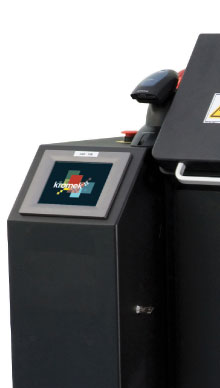
The Kromek Verifier is a solution for desktop liquid inspection. Using an X-ray spectral imaging technique to confirm that the contents of a bottle or container are safe, the Verifier offers a quick and easy method of allowing LAGs back through transit areas.
Business as usual with Kromek’s liquid Verifier
Kromek poses the question, why wait till April 2011 to welcome liquids, aerosols & gels (LAGs) back? The company believes the opportunity exists to welcome LAGs back into transit areas with the right security technology.
Airport security remains a major concern for everyone involved in aviation, from operators through to passengers, and the ban on LAGs has had a huge impact on duty free revenues. Kromek has spent years developing bespoke liquid scanning devices for airports, now ready and available for commercial deployment. The Kromek Verifier is a solution for desktop liquid inspection. Using an X-ray spectral imaging technique to confirm that the contents of a bottle or container are safe, the Verifier offers a quick and easy method of allowing LAGs back through transit areas. Kromek’s Verifier is 100% tried, tested and now available to airports worldwide.
With a database of over 800 commonly sold duty free bottles, the Verifier is suited to airport security checkpoints for transfer passengers where a range of duty free items are presented for inspection. Customs authorities have tested and evaluated the system, which detects all threat substances, including explosive materials and narcotics.







